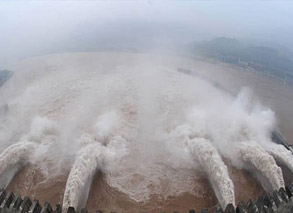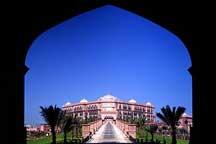The Yao ethnic minority
2009-08-07 11:40 BJTPost-1949 Life
The Yaos have an age-old revolutionary tradition. As early as the Han Dynasty, they fought feudal imperial oppression. During the Tang and Song dynasties, they waged more rebellions against their Han rulers. Still later, in the 15 years from 1316 to 1331, they launched more than 40 uprisings. The largest revolt lasted for a century from 1371. The frightened Ming (1368-1644) emperors had to send three huge armies to conquer the rebels.
The famous Taiping Rebellion, led by Hong Xiuquan in the 1850s against the Qing (1644-1911) feudal bureaucrats, received effective support from the Yaos. Many Yao people joined the Taiping army and were known for their bravery.
The Yaos played an active role in China's new democratic revolution which finally led to the founding of the People's Republic. The Yao Autonomous County of Bama in Guangxi today used to be the base area of the 7th Red Army commanded by Deng Xiaoping in the 1930s.
Democratic reforms were carried out after 1949 according to the different characteristics of the three types of Yao economy. The reforms abolished the feudal exploitation system and enhanced the progress of agriculture, forestry, animal husbandry and other forms of production.
Meanwhile, autonomous localities were gradually formed for the Yaos.
In August 1951, when a central government delegation visited Guangxi, it helped the local government set up Longsheng Autonomous County, the first one for the Yaos. From 1952 to 1963, eight Yao autonomous counties appeared, and over 200 autonomous townships covered smaller Yao communities. The policy of regional autonomy enabled the Yaos to be their own masters, ending the history of discrimination and starting an era of national equality and unity.
Local autonomous governments have made successful efforts to improve the people's lives. The Yao Autonomous County of Duan in Guangxi is a fine example. There the Yaos live in karst valleys. The soil is stony, erosive and dry. An old saying went that "the mountains start burning after three fine days; the valleys get flooded after a heavy rain." Now the saying is nothing more than history, as the government has helped remove the jeopardy of droughts and floods by building tunnels, dams and reservoirs.
Before 1949, the Yao area only had a few handicraft workshops. But now, there are many medium- and small-sized power plants and factories making farm machines, processing timber, and making chemicals and cement.
In the early 1950s, few Yao people had any education, but today, schools can be found in all villages. Almost every child of school age gets elementary and secondary education. Some elite students go on to colleges.
In the old days, the Yaos never knew such a thing as a hospital. As a result, pestilence haunted the region. Now, government-trained Yao doctors and nurses work in hospitals or clinics in every Yao county, township and village. Epidemics such as smallpox and cholera have been eliminated. With the people's health well protected, the Yao population has doubled since the founding of the People's Republic.
Editor: Zhang Wen | Source: People's Daily
 Mail
Mail Share
Share Print
Print


 Video
Video









 2009 China Central Television. All Rights Reserved
2009 China Central Television. All Rights Reserved